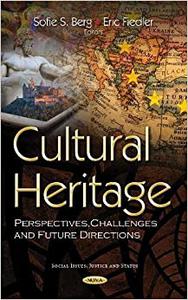
Sofie S. Berg, Eric Fiedler, "Cultural Heritage: Perspectives, Challenges and Future Directions"
English | 2017 | ISBN: 1536129135 | PDF | pages: 201 | 10.4 mb
The authors begin by discussing research on the digitalization of cultural heritage, illuminating the centralization and specific conservatism of digitization in Poland, a low level of access to digitized objects, and poor acclimatization to user needs. A study is presented on the ethical and legal aspects of shipwrecks with a complex ownership status due to the waters they lie in and because their cargo may belong to a community that was colonised, to one that does not exist today, or to a state whose territory belongs to a different, new state. This chapter concentrates on the varied formulas for shipwreck claim, as well as the debates on state succession for underwater cultural heritage and on the return of cultural objects found in shipwrecks. Next, an investigation is offered on the dimensions of design intervention for territorial Cultural Heritage, from the typology of the object of intervention to the scale of intervention, up to identifying the specific actions that can be implemented. The authors go on to review cultural policy agendas of the EU from the macro perspective in the context of EU's Europeana project as a case of digital humanities. Additionally, they discuss how the Europeana project is currently executed and what approach it is focused on. Documentation of cultural heritage is examined as a necessity, with its importance exemplified in today's tempestuous world, where many monuments vanish because of the advancement of human society, indifference, vandalism, terrorism, and other reasons. A paper is presented with the goal of determining which non-invasive methods give the instructions for preparing the proper facsimile, or "reprint of an out-of-print book that represents an identical reproduction of the original." Finally, the authors deliberate on the modification of Building Information Modeling methodology to address the modeling and management of heritage/historic buildings, resulting in Heritage/Historic Building Information Modeling.
Recommend Download Link Hight Speed | Please Say Thanks Keep Topic Live
Download From 1DL
https://1dl.net/xsvgm253tcrc/ugzut.C.H.P.C.a.F.D.rar

https://rapidgator.net/file/bdcfcddd8659363df8d3f6769cd50c92/ugzut.C.H.P.C.a.F.D.rar.html

https://nitroflare.com/view/71757139AB67015/ugzut.C.H.P.C.a.F.D.rar

https://uploadgig.com/file/download/b2Ff58a84D9a4ce5/ugzut.C.H.P.C.a.F.D.rar
Links are Interchangeable - No Password - Single Extraction
